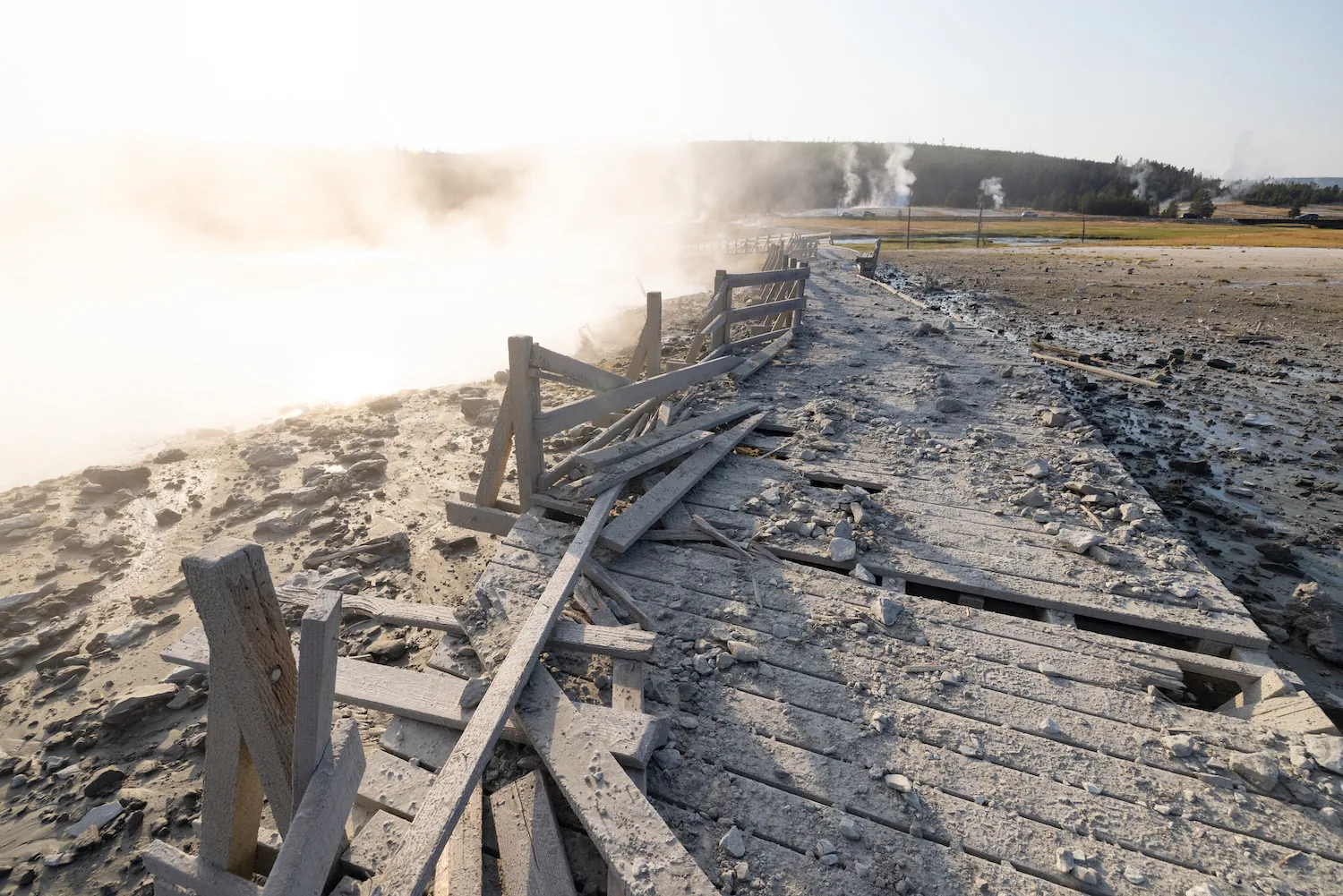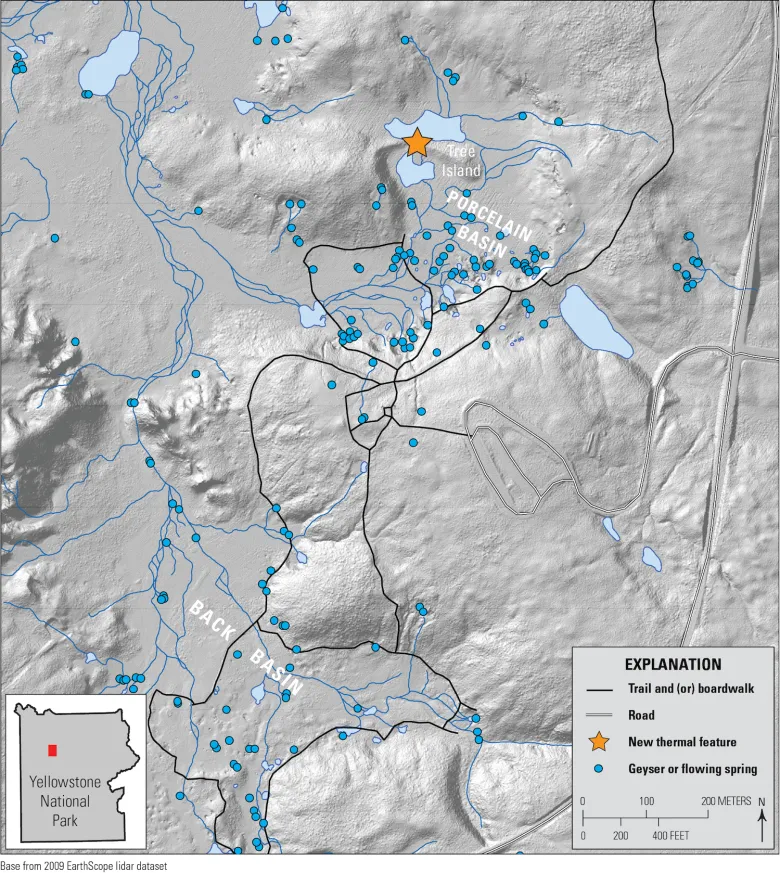Hot-tub-sized hole is the result of several hydrothermal explosions, scientists believe
By Katie Klingsporn WYOFILE
It appeared sometime during the frozen months of winter when snow blanketed Yellowstone National Park. With public access sharply limited, there were no witnesses to what were likely several explosions in the Norris Geyser Basin. But the eruptions left behind a new thermal pool.
Ice-blue in color, warm in temperature and a little larger than a backyard hot tub, the pool is the newest known feature to bubble up in Yellowstone’s simmering hydrothermal landscape. It has yet to be named.
The U.S. Geological Survey unveiled the feature in a playful and lyrical press release last week. It was when park geologists first ventured back into Norris Basin in April following the winter that they detected a change, the press release states.
They were conducting routine maintenance of temperature logging stations in Norris, according to the release, “when what to their wondering eyes did appear, but a blue water spring that was new since last year!”
The pool sits in the Porcelain Basin area of Norris, just west of a patch of vegetation informally known as “Tree Island.” The crater-shaped pool is about 13 feet across, with temperatures around 109 degrees Fahrenheit. For comparison, the water that spews from Old Faithful is 170 degrees Fahrenheit, according to the National Park Service.
The how
Yellowstone sits atop a massive caldera complex, and the geysers, mudpots, vents and other thermal features that draw millions of annual visitors are the surface expressions of the dynamic hydrothermal system underground.
Because it’s so dynamic, new events and features like the Norris pool are routine. Just last summer, a more dramatic incident occurred when an explosion in Biscuit Basin blew up a portion of the boardwalk as it sent a plume of boiling water and boulders into the air. Yellowstone National Park closed Biscuit Basin following the event, which sent terrified tourists running but didn’t injure anyone. The area remains closed.

When geologists identified the Norris pool as a new feature, they began sleuthing into how and when it emerged.
Rocks coated in a light-gray sandy mud and measuring up to about 1 foot across surrounded the pool, according to the USGS. Those hints pointed to a dramatic origin.
“With all of this evidence of quite a commotion, they knew they had found a hydrothermal explosion!” the press release gushes.
Next, scientists sifted through high-resolution satellite imagery. These images indicated that no feature was present prior to Dec. 19, 2024. But by Jan. 6, a small depression had formed, and by Feb. 14, the pool could be seen fully developed.
In addition, infrasound monitoring devices detected several low-level acoustic signals from the direction of the new feature during that time span. The most obvious was recorded on Christmas Day of 2024, with others on Jan. 15 and Feb. 11.
Because monitors did not detect associated seismic signals, however, scientists ruled out a significant explosion such as the one that rocked Biscuit Basin.
“Rather, it appears that the feature formed via multiple small events that initially threw rocks and later threw silica mud a short distance, creating a small pit that became filled with silica-rich water,” the USGS concluded.

Names, explosions
Anemone Geyser. Mushroom Pool. River Styx. Yellowstone’s many thermal features come in all kinds of names. So what and how will the new pool be named?
The United States Board on Geographic Names officially designates names of natural features within Yellowstone National Park using several guidelines. Thermal features are by convention not named after people — a tradition that dates to the 1870 Washburn Expedition. Generally, names that “capture the appearance, activity, location, or notable description of a place and that are unique, succinct, noncontroversial, and acceptable to local citizens are the gold standard,” according to USGS.
Hydrothermal explosions and new features in the ever-changing thermal landscape of Yellowstone have long captured public curiosity.
In Norris Geyser Basin, that includes the 1989 eruption of Porkchop Geyser, which threw a mixture of heated water and rocks into the air. Porkchop Geyser erupted again in 2003, for the first time in many years. That event was believed to be related to several changes in Norris that year, including the appearance of fumaroles several-hundred feet in length and an uptick in geyser activity.
More recently, an April 2024 explosion in the Porcelain Terrace area left a crater several feet across.














